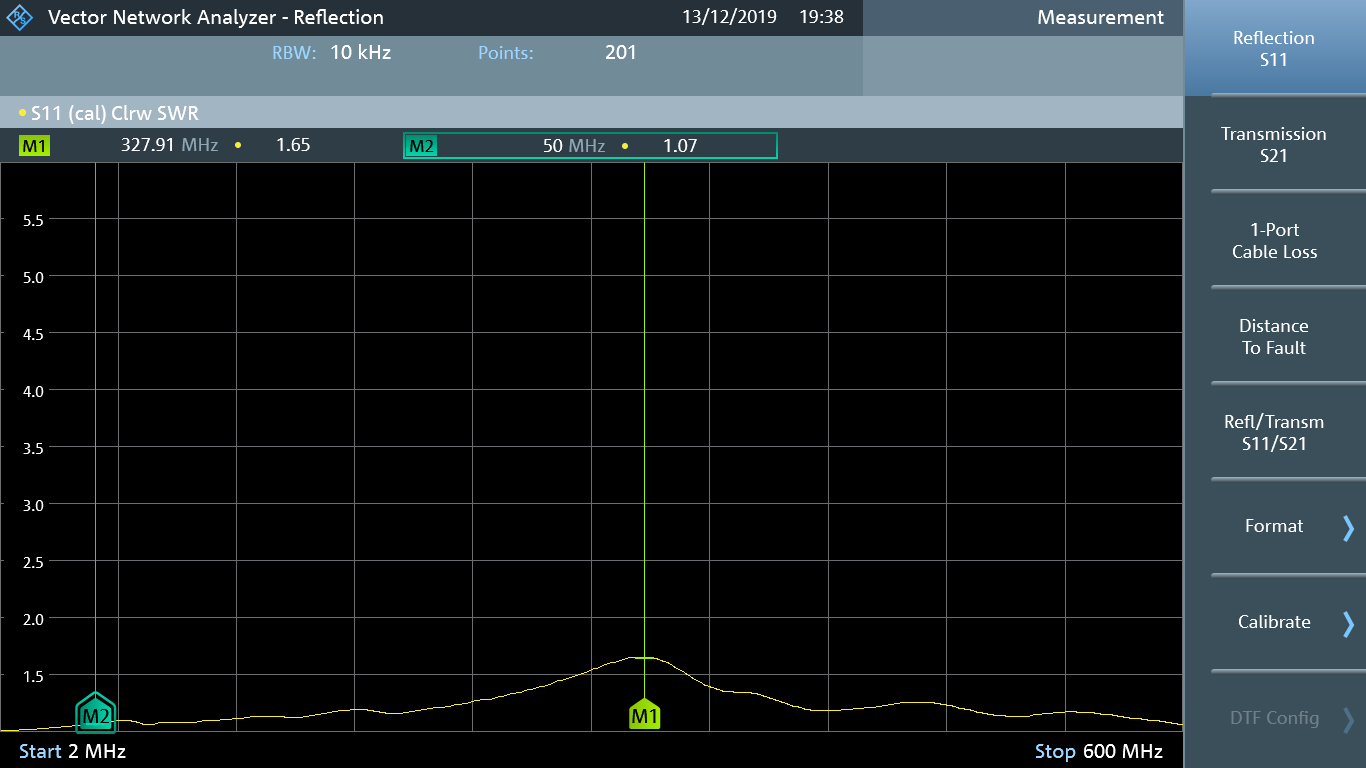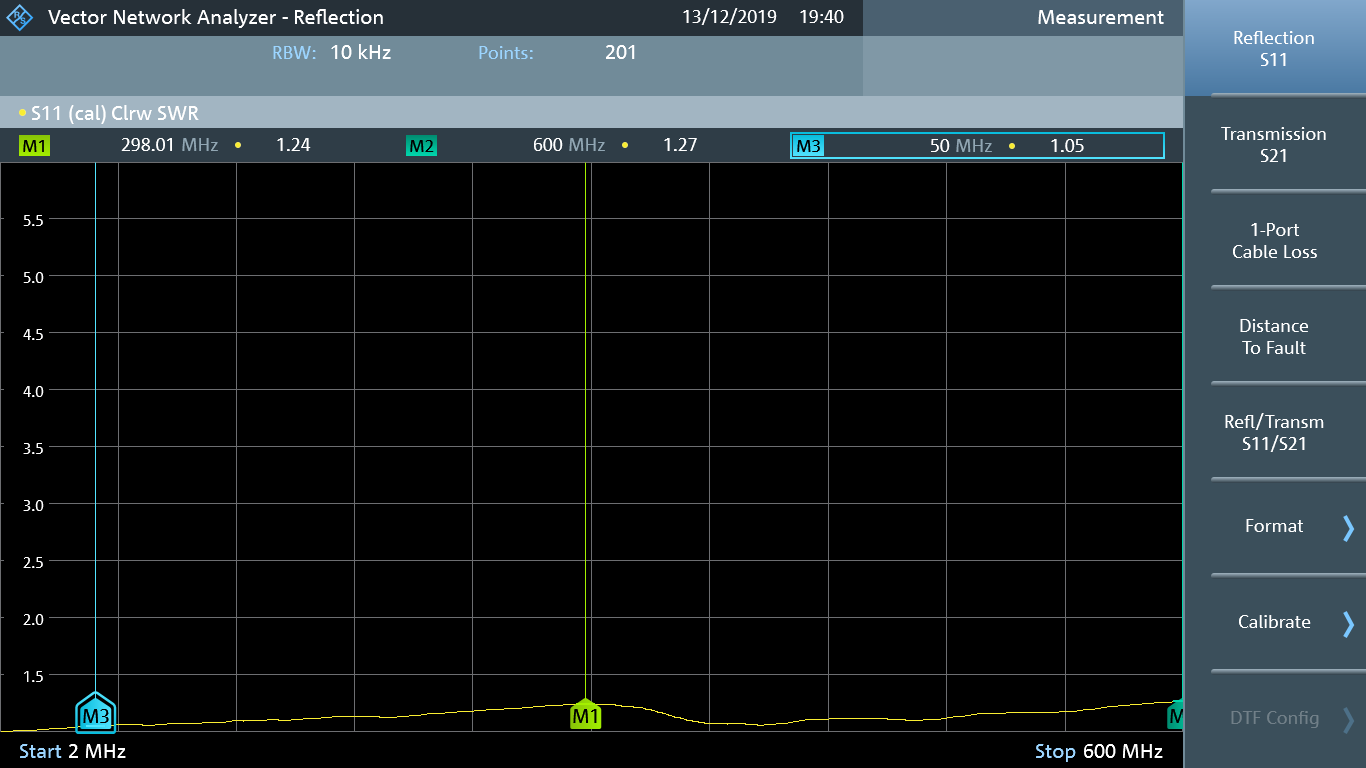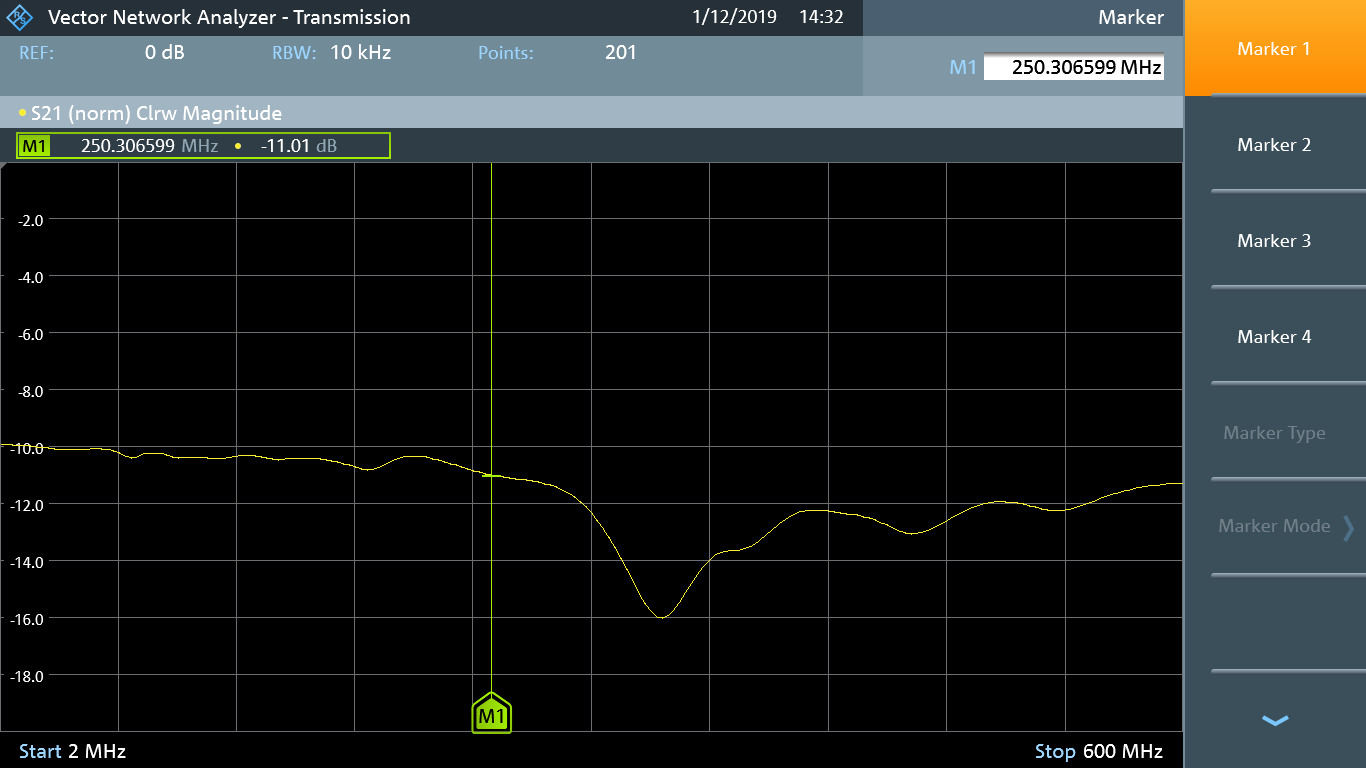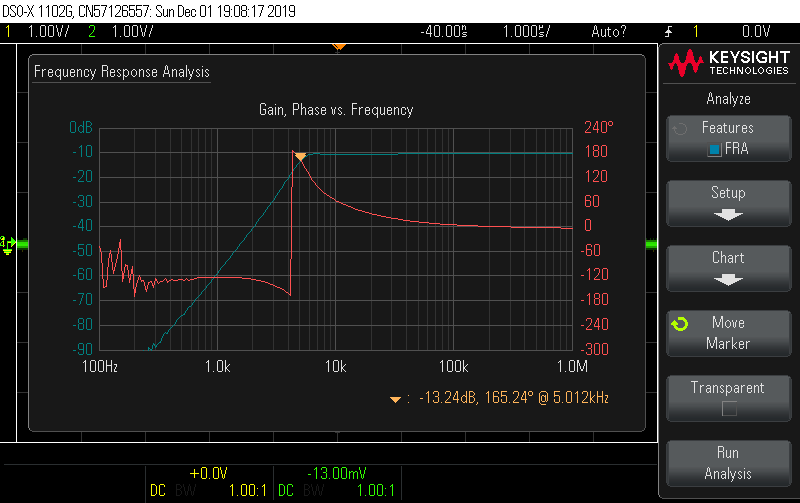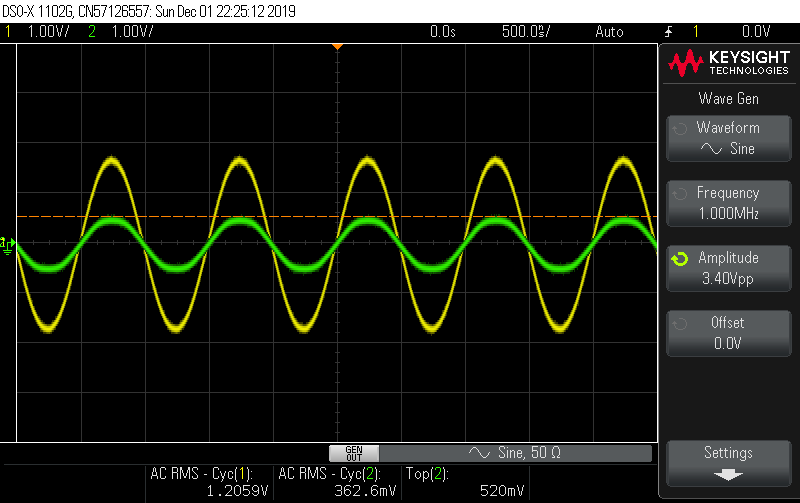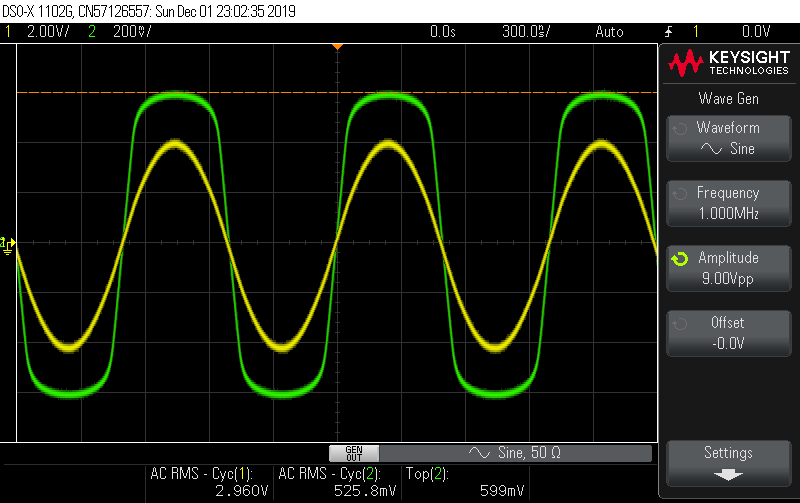-
S11 measurements
12/14/2019 at 00:49 • 0 commentsOne thing I forgot to characterize was the reflection measurements (S11 and S22). The 11947A datasheet cites a VSWR of < 1.7, and < 1.3 below 50 MHz for the input port. Setting up the board on the VNA, I measured S11:
![]()
The value at 200 MHz is 1.16. Well within spec, even beyond the operating range. Looking at the output port:
![]()
Also within the original spec of output port VSWR < 1.8, and < 1.2 below 50 MHz.
-
Assembly and test results
12/06/2019 at 20:32 • 0 commentsAfter assembling the prototype boards, I measured their performance on a R&S FPC-1500 SA & VNA. The attenuation stays 10 dB nominal until around 250 MHz, which satisfies the upper limit spec of 200 MHz.
![]()
Since the FPC-1500 measurement range bottoms out at 2 MHz, I examined the low-frequency performance on an oscilloscope using the Bode chart/frequency response analysis. For this configuration, the 11947B output is connected to the scope port via a 50 ohm feed-through termination to have 50 ohm source and load impedances. The low-frequency roll-off occurs around 5-6 kHz with a flat response up to 1 MHz.
![]()
To examine the limiter performance, I stayed on the oscilloscope and increased the generator amplitude. The limiter becomes active (+10% increase in attenuation) at +14.6 dBm input power. The HP datasheet has the limiter threshold at +17 dBm, a close match.
![]()
Increasing the generator output further, the limiter distortion becomes highly visible. The top output voltage is 600 mV. An upper bound on the output power would be a square wave with amplitude of 600 mV for a RMS voltage of the same. At a system impedance of 50 ohms, the power output is limited to +8.6 dBm.
![]()
All told, the attenuator and limiter function well within spec and on the first board spin. Thanks HP engineers for the excellent design!
 James Wilson
James Wilson